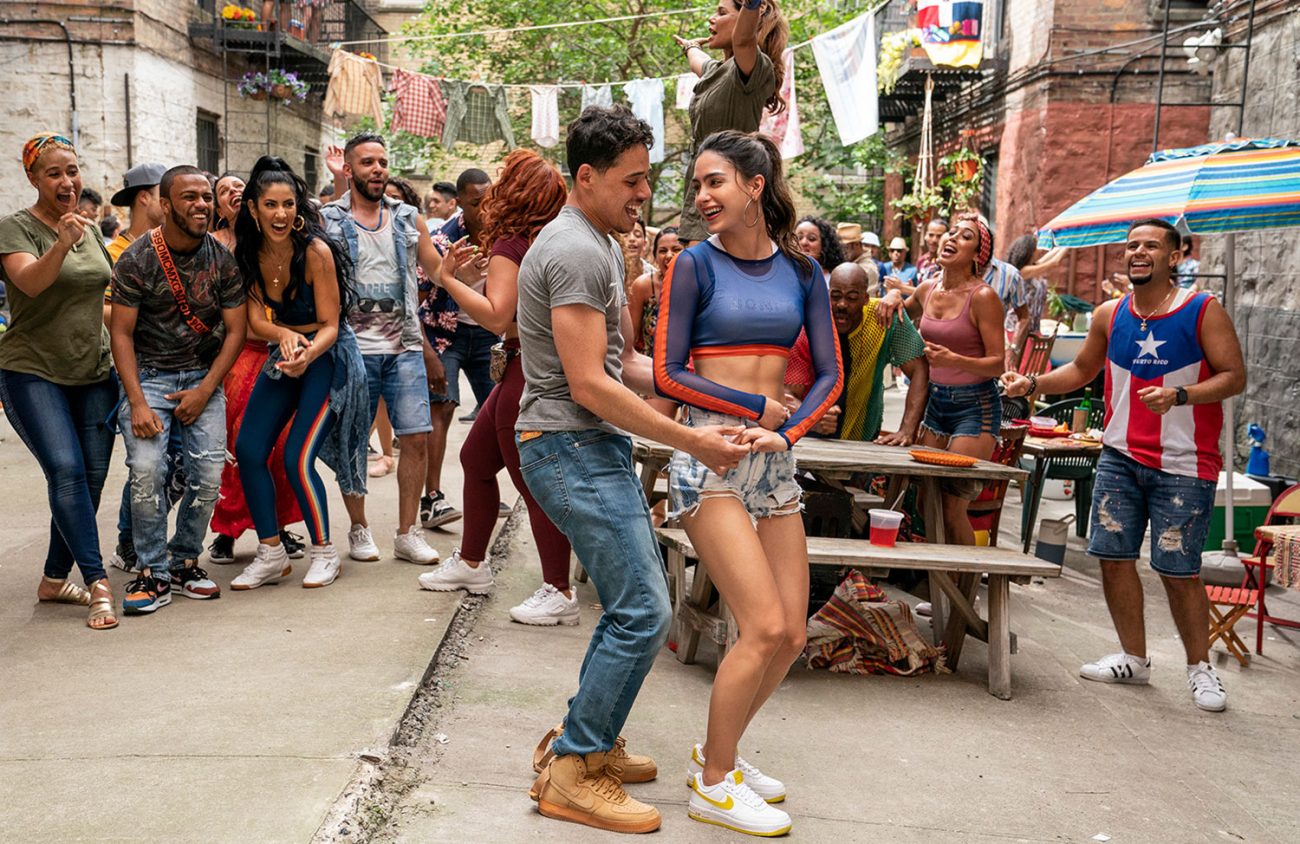Let me get this out of the way: I love West Side Story. Since the first time I saw the movie as a teen after reading about it in Guitar World magazine, I’ve been captivated by the ways Leonard Bernstein brought together classical styles, jazz, opera and the sounds of the street — and most important, Jerome Robbins’ choreography.
So why do I bring up my passion for West Side Story?
Because at the beginning of In the Heights, we immediately hear the same rhythm (what becomes a sort of motif throughout the movie) as West Side Story’s “America.” And in some ways, the cinema adaptation of Lin-Manuel Miranda’s Broadway play, which is filled with colorful cinematography and exciting choreography, is a continuation of the Puerto Rican migrant struggle in West Side Story.
Miranda’s Hamilton (2015) was the musical heard ‘round the world. Now a mainstream cultural darling, Miranda revisits the Broadway musical In the Heights, which was a Pulitzer Prize finalist for drama in 2009. Directed by Jon Chu, who directed Crazy Rich Asians (2018,) and composed by Miranda, In the Heights tells the story of a tight-knit community in New York City’s Washington Heights neighborhood.
From bodega store owner Usnavi (Anthony Ramos) to taxi service owner Kevin Rosario (Jimmy Smits), they all have sueñitos (little dreams) for their lives — whether it’s Usnavi’s plan to re-establish family roots in the Dominican Republic or Rosario’s spending his money on his child’s college expenses. These sueñitos occur, though, while the neighborhood is threatened by incoming gentrification and systemic racism.
In the Heights is a generational answer to West Side Story. And that seems intentional. Usnavi breaks the fourth wall to list notable Latinas, including Rita Moreno, who portrayed Anita in the film adaptation of West Side Story. Like West Side Story, In the Heights addresses racism in the U.S. but also the hope that your sueñitos can come true if you work hard enough.
In West Side Story’s film adaptation, “America” is a call and response song where women Puerto Rican migrants sing about the wonderful modern conveniences of living in the U.S. and the men anwer with laments of their new life: “Buying on credit is so nice,” the women sing, “One look at us and they charge twice,” the men respond.
These conversations around the opportunities and pitfalls of America continue in In the Heights. Nina Rosario (Leslie Grace) leaves New York to attend Stanford but experiences racism at the university and guilt that her father is slowly selling his business to pay for her tuition. And Usnavi’s cousin, Sonny (Gregory Diaz IV) has a sense of belonging in New York City, but realizes his many limitations after attending a DREAMers protest — because he’s undocumented, he can’t go to college or even get a driver’s license.
Although the movie is available on HBO Max, In the Heights is a must-see on the theater’s big screen. From Christopher Scott’s choreography that can stand up to Robbins’ West Side Story to the colors of costuming and cinematography, In the Heights is the perfect way to return to the movie theater after our long time away.
It’s not necessarily a perfect musical movie — though it is close. Similar to Disney’s Star Wars and Marvel movies, In the Heights’ pacing moves a mile a New York minute. Its speed keeps you glued to your seat, but it moves so fast that you leave the theater without remembering any melodies.
While leaving the theater, what kept repeating through my mind was the rhythm of the soundtrack, the accented beat of one, two, three, four, five, six — one, two, three. And maybe that’s what Miranda was intending. Perhaps he just wants the audience to listen to his block to remember the rhythms of Washington Heights and the sueñitos of its residents. ν
In the Heights is showing at Broadway Metro.
